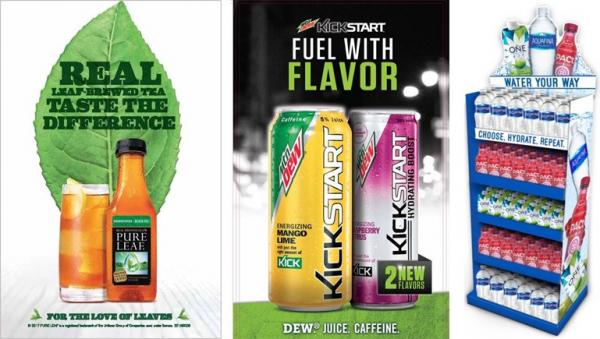October 5, 2017
The Stories Behind the Work: PepsiCo
In the fall of 2014, Healthier Generation came together with representatives from the American Beverage Association, The Coca-Cola Company, Dr Pepper Snapple Group and PepsiCo to announce a landmark agreement to decrease beverage calories in the overall American diet. The beverage industry committed to reducing beverage calories consumed per person nationally by 20% by 2025. Three years into the work we asked representatives from each company to share some key insights from our work together so far. This post features an interview with Gary So, Marketing Vice President, PepsiCo
Q: What motivated PepsiCo to join the industry effort to reduce the consumption of calories and sugar from beverages?
A: Joining the Beverage Calories Initiative effort was a no-brainer for PepsiCo because it aligns so well with our company’s decade-long commitment to Performance with Purpose. As part of that commitment, we are already diligently focused on transforming our beverage portfolio to offer consumers healthier options, with fewer added sugars and lower or zero calories and so it was very natural to apply those efforts to this groundbreaking industry-wide initiative.
We also know what a powerful message it sends when three competitors come together as an industry around shared commitments to help bring about change. And, we are committed to being part of that change.
Q: Impacting consumer consumption is more complex than simply increasing access to different products — can you explain how PepsiCo plans to achieve this ambitious goal?
A: You’re right. Achieving the ambitious BCI calorie reduction goal is not simple at all but, we have people all across PepsiCo who are working to help us get there. All of their contributions are important but the work of our product developers, marketers and customer teams is particularly critical.
Thanks to the product innovations coming out of our research and development group, PepsiCo has introduced 118 new beverages with 100 calories or less per 12 fl. oz. since September 2014. One-third of these new products have 10 calories or less.
Two great examples of new product innovations are Mtn Dew Kickstart which has 65% less sugar than regular Mtn Dew, and zero-calorie LifeWTR which was introduced in January 2017 and is on track to generate $200 million in annualized retail sales.
PepsiCo’s product developers are also working to find ways to cut sugar in existing products, without sacrificing taste. No easy task but, we have best in class examples of success across our Lipton and Brisk lines of teas and juice drinks, where we’ve successfully cut sugar by 20–45%.
And, our marketing teams are working to fire up consumers about the more than 300 reduced calorie beverages we offer.
Sometimes it’s hard to recognize how the marketing we do in stores, on-line or on TV supports the Beverage Calories Initiative because it usually doesn’t mention calories. For example, our marketing for PureLeaf unsweetened teas, three PepsiCo water beverages and Mtn Dew Kickstart, speaks to consumers about what matters most to them — taste, hydration and flavor, not calories — even though every one of these brands is helping us achieve the BCI calorie reduction goal.
Lastly, the picture would not be complete if we didn’t look at the work of our customer teams — the PepsiCo associates who work hand-in-hand with our customers to build relationships and get distribution for our products. To get more reduced calorie products into the hands of consumers, we first need to get them in every place that beverages are found, including store shelves, restaurant fountains and cafeteria vending machines.
One great example of their work is the change being made with one of PepsiCo’s largest foodservice customers, Taco Bell. In January 2017, Taco Bell replaced three full-calorie fountain beverages in its 7,000 restaurants with low- and mid-calorie choices. When the changes are complete, seven of the 15 fountain beverages available at Taco Bell will be reduced calorie choices.
Another example is “Hello Goodness” — the #1 healthier vending platform in the market — which provides consumers with convenient, healthier options when they’re on the go. The beverages in these machines are only no-, low- and mid-calorie choices and 100% juices. Since Hello Goodness launched in 2015, there have been more than 25,000 distribution points across healthcare, recreational, transportation, governmental, workplace and educational customers around the country, and our customer teams are on track to hit 50,000 by the end of 2018.
Q: What do you think your biggest challenge is to achieving this goal?
A: When you think about the conversations that need to happen neighborhood by neighborhood, store by store, to make the product changes we’re talking about, it can be a bit overwhelming. And if we try to make changes too fast — and get out ahead of the consumer — we will fail. Why? Because, if we put products into stores that don’t sell, our customers will pull them from the shelves. They stock what sells — that’s what keeps them in business. So we need to pace our changes, maintain the confidence of our customers, fuel consumer demand with great products and great marketing. It’s an evolution not a revolution. It takes time.
Q: What can consumers expect to see from PepsiCo in the coming months, related to decreasing calories and sugar in your products?
A: We have a shared industry goal to cut beverage calories but we’re still pretty fierce competitors when it comes to our innovation, marketing and distribution plans. Rest assured though, consumers will see more bold actions in 2018.


